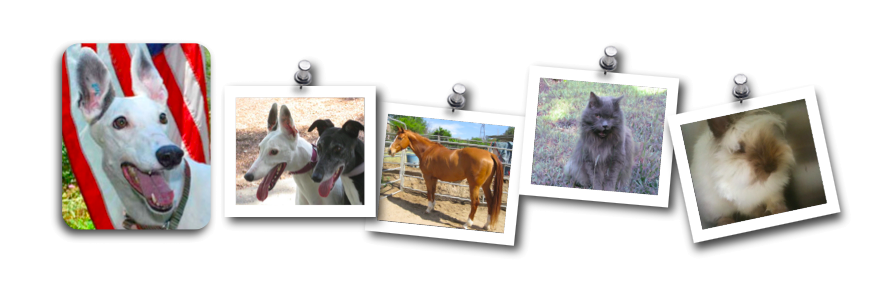By sharing our concerns and successes, we all benefit.
Animals live to serve us one way or another, so knowing how to take care of them is critical for our mutual well being.
Tuesday, June 22, 2010
Dangers of raw pet foods: Free Radical Problems Masked
– Essential fatty acids
and other health enhancing lipids are critical in the diet. Once foods
are ground, mixed, exposed to air, light and pro-oxidants such as heme
iron and other metals found in plant and animal tissue, the contained
lipids are oxidized to chain reaction producing free-radicals, causing
rancidity and oxidant toxins. Freezing at appropriately low
temperatures slows this process but does not stop it. The temperature
in conventional freezers used for RF pet foods is not insurance against
such oxidation. Because the frozen state masks olfactory detection of
rancidity, foods that would be otherwise rejected end up being
consumed. The free-radical pathology potential can then work its
chronic degenerative disease and immune weakening effects.
Labels:
canine care,
dog care,
dog food,
dog health,
holistic animal care,
pets,
pets are healty
Freezing Masks Inedibles
– Raw meat and organ tissue
continues to use ATP (source of energy) until it is exhausted and the
tissue enters a state of rigor. Endogenous enzymatic activity within
the tissue continues to digest the muscle tissue (proteolysis)
softening it until it becomes tender and develops the typical palatable
taste. This process is retarded by cold. The freezing of properly aged
meat presents few problems, however, any residual ATP present in the
tissue during freezing will contract the muscle upon thawing resulting
in a more unpalatable product. Mixed RF pet foods would hide this
problem.
Dangers of raw pet foods: Problems Are Ignored By Producers
– RF food pathogens include not only bacteria, but fungi, viruses and parasites. Toxins include those from molds (mycotoxins), bacteria and those created by oxidation. In our study of RF pet products in the stream of commerce, not one producer addressed these concerns with any technological know-how that we could discern, and most did not even acknowledge the problems potentially lurking in their foods.
Dangers of raw pet foods: Raw Frozen Foods Are Not “100% Complete”
– Many RF foods make (or imply) the same spurious 100% complete and balanced pet food claim as heat processed foods and thus carry with them the same health dangers. Feeding any food exclusively, let alone a nondescript packaged food containing who-knows-what from who-knows-what manufacturing environment is a bad choice if health and safety are of concern. (See The Truth About Pet Foods by Dr. Wysong).
Labels:
dog care,
dog food,
dog health
Dangers of raw pet foods
Producers With Only Kitchen Technology – Because of the minimal technology required to produce a RF pet food, essentially anyone regardless of credentials or expertise can bring a product to market. All one needs to do is grind and mix ingredients in a kitchen, package and put in a freezer. There are no controls over the conditions in the kitchen, the quality of the ingredients or the method of freezing. All these factors can dramatically influence the nutritional value and pathogenic and toxic content of the food. But being in a frozen state hides these potential dangers and therefore poses a threat to both pets and the humans who handle the foods. John Doe can make a food under unknown conditions and with unknown ingredients, label, package, freeze and deliver to consumers or stores without one single control monitoring or impeding the process. Regulators may eventually examine the label if they happen to see it in a store (they will never see it if shipped directly to consumers) and may object to some terminology or the like; but, all John needs to do is change the label and all will be well. The product could contain every manner of ingredient, be laced with virulent pathogens, and receive the www.wysong.net/products/cat-dog-health-nutrition-truth-about-pet-foods.aegis of regulators … and into the market it goes.
Display Packaging Causes Free Radicals
– Light, as
well as air, can promote free radical production. Retail display pet
packaging that is clear or light permeable permits light to catalyze
the free radical (disease promoting) process.
The case against raw frozen pet food
R. Wysong, DVM, V. Savant, PhD
For some 25 years Dr. Wysong has alerted the public to the dangers of exclusively feeding heat processed pet foods. Not only is nutrient value diminished by heat, but a spectrum of toxins are created. Additionally, the singular feeding of processed pet foods has led to the spurious “100% complete and balanced” claim that is both logically and scientifically flawed. Entrepreneurs have seized upon this information to create a spate of raw frozen (RF) pet foods to capture a market niche and to fill the demand from consumers wanting a raw alternative to standard heat processed canned, semi-moist and dried pet foods. This market trend, as with most others, may begin with some truth (raw food is the best food) but gets distorted, if not perverted, once economic opportunity enters the picture.
For some 25 years Dr. Wysong has alerted the public to the dangers of exclusively feeding heat processed pet foods. Not only is nutrient value diminished by heat, but a spectrum of toxins are created. Additionally, the singular feeding of processed pet foods has led to the spurious “100% complete and balanced” claim that is both logically and scientifically flawed. Entrepreneurs have seized upon this information to create a spate of raw frozen (RF) pet foods to capture a market niche and to fill the demand from consumers wanting a raw alternative to standard heat processed canned, semi-moist and dried pet foods. This market trend, as with most others, may begin with some truth (raw food is the best food) but gets distorted, if not perverted, once economic opportunity enters the picture.
Subscribe to:
Comments (Atom)
